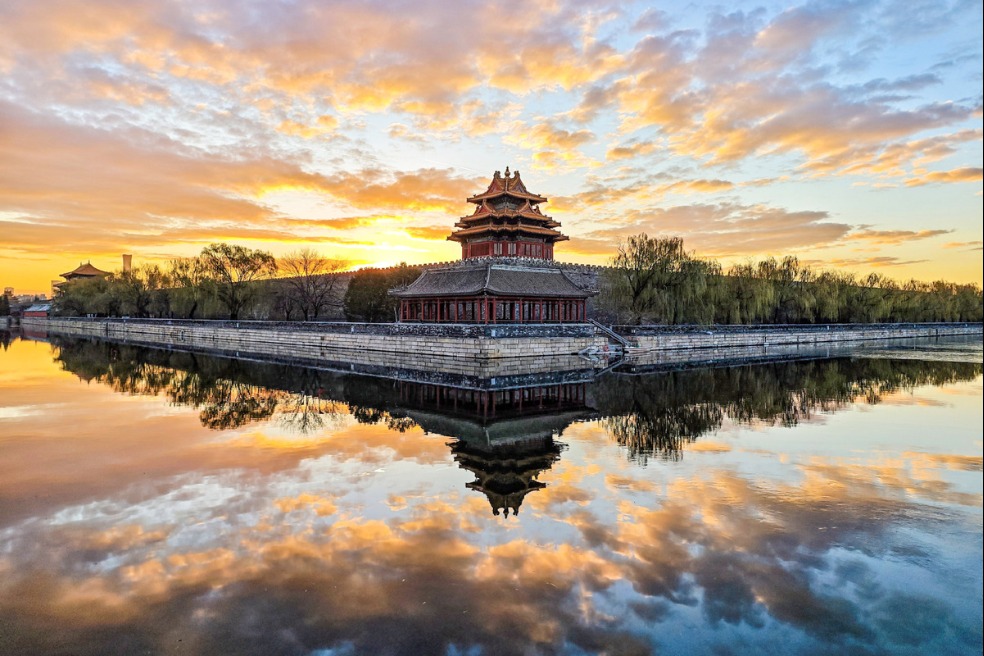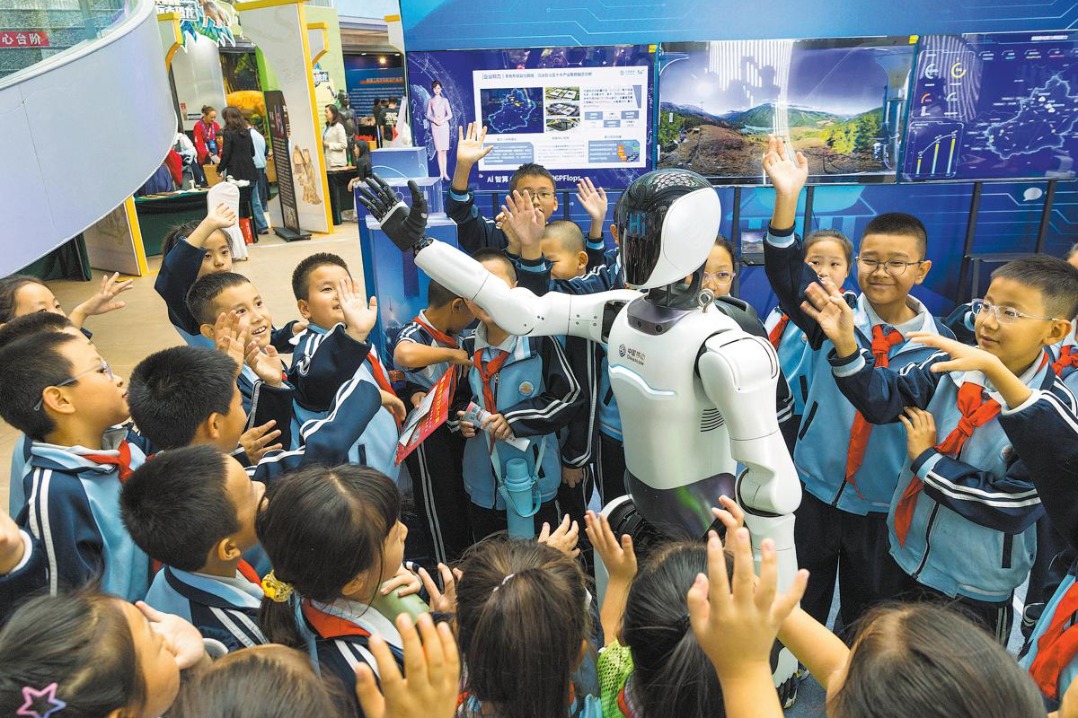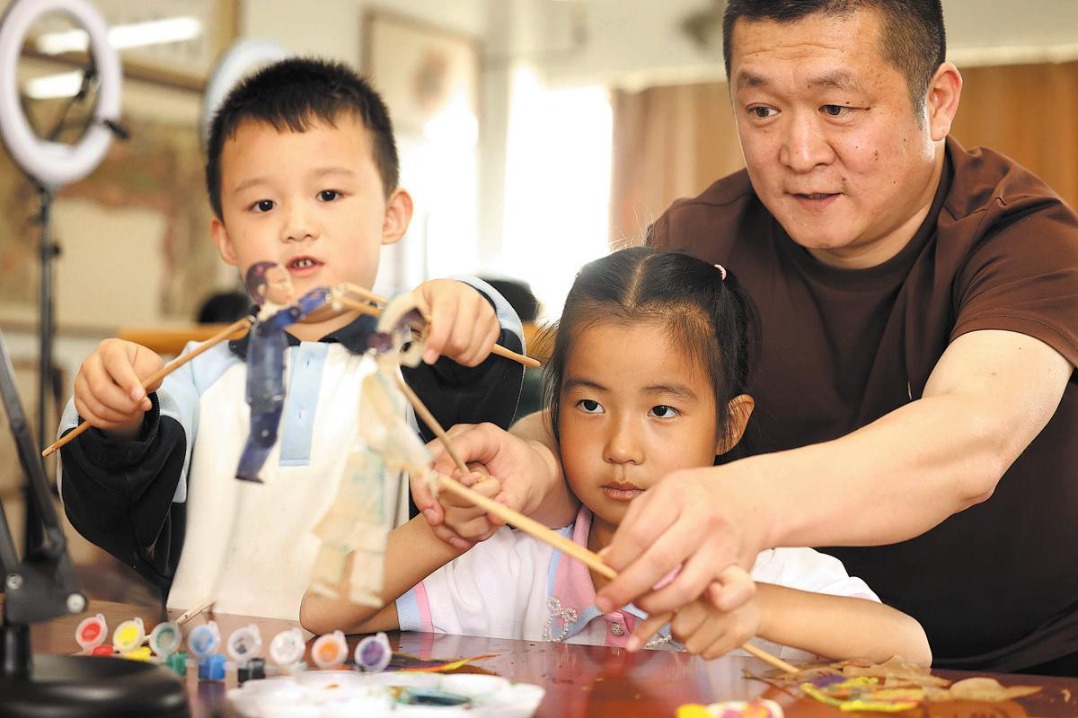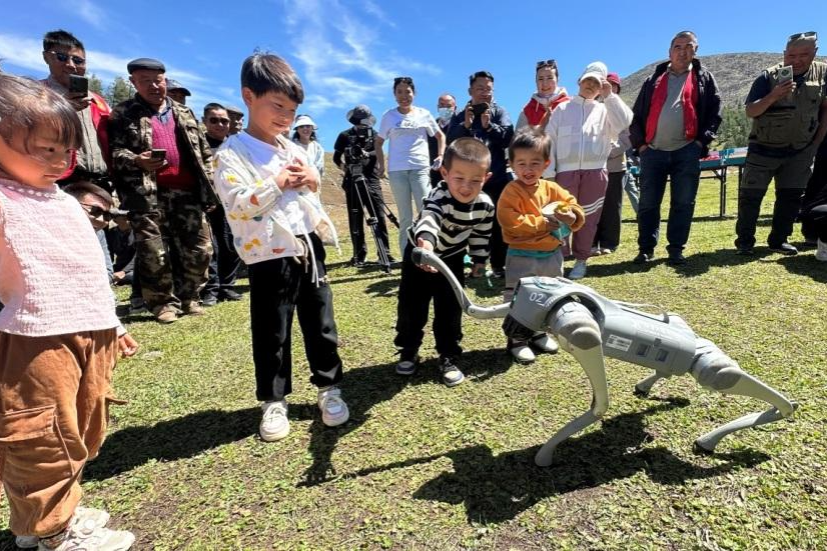A force to be reckoned with
New Fourth Army Memorial Hall in Jiangsu pays heartfelt tribute to the martyrs of war of resistance with tales of heroic deeds as it takes the stories on the road, Yang Feiyue reports.

At first glance, the white marble stele at the New Fourth Army Memorial Hall in Yancheng, East China's Jiangsu province, seems unremarkable.
But a closer look at the nearly two-meter-tall monument reveals that it bears a moving tale.
"The great embankment stretches approximately 80 li (40 kilometers), from Huacheng (a low-lying area near Binhai county of Yancheng) in the south to the Huaihe River in the north, with a base width of 21 meters and a crest of three and a half meters," the inscription reads.
"To understand this story, we must first consider the geography of Yancheng, a historic revolutionary base," says Qiu Jinbiao, director of the memorial hall. "Located along the Yellow Sea, the region had long suffered devastating tidal surges and coastal flooding. In August 1939, disaster struck: a catastrophic tsunami pounded northern Yancheng, sweeping away thatched houses, submerging entire villages, and swallowing vast tracts of farmland. More than 13,000 people lost their lives in the waves.
"It was at this desperate moment that the Communist Party of China and the New Fourth Army stepped forward, standing as a bulwark against the fury of the sea," he adds.
After the Chinese People's War of Resistance Against Japanese Aggression (1931-45) broke out in full scale in 1937, the Communist Party of China and the Kuomintang formed their second united front to combat Japanese imperialism.
As part of the agreement, the Red Army and guerrilla forces from eight southern provinces were reorganized into the New Fourth Army, with Ye Ting as its commander.
In January 1938, as the war situation changed, the New Fourth Army's headquarters relocated from Wuhan of Hubei province to Sanyanjing, Nanchang of Jiangxi province. As more officers arrived, it established command, political, and logistics departments. In Nanchang, the New Fourth Army completed the organizational structure of its leadership and consolidated internal structures. At the same time, the army established a wartime service corps that rallied the public with street campaigns to resist the Japanese invasion.
This initiative turned Nanchang into a hub of anti-Japanese activity in southeastern China.
But the army's growing strength alarmed anti-Communist hard-liners within the KMT. In January 1941, the KMT faction launched the notorious Wan'nan Incident (Southern Anhui Incident) to crush the New Fourth Army, inflicting heavy losses.
To counter KMT suppression and continue the fight against Japanese occupation, the CPC reestablished the New Fourth Army in Yancheng on Jan 25, 1941. It was reorganized into seven divisions and one independent brigade, totaling more than 90,000 troops.
This marked the New Fourth Army's transition into an independent, self-sufficient force responsible for anti-Japanese operations behind enemy lines in Central China.
Over the course of the war, it fought more than 24,600 battles, eliminating over 470,000 Japanese and puppet troops.
From an initial 10,000 soldiers, the force grew to 210,000 regular troops, 97,000 local militiamen, and nearly a million civilian self-defense fighters. More than 80,000 soldiers died in the struggle.
"It vividly illustrated the New Fourth Army's pivotal role," Qiu says.
Amid relentless attacks from Japanese puppet forces and severe shortages, the New Fourth Army joined forces with Song Naide, head of Funing county anti-Japanese democratic government, to protect the coast. Mobilizing over 20,000 laborers, they built the seawall with their bare hands — a literal bulwark of flesh and blood against the raging tides.
The people of Yancheng, grateful for this lifesaving project, carved their appreciation into the white marble stele now displayed in the memorial hall.
"This stele stands today as an enduring physical proof of the CPC and New Fourth Army's unwavering commitment to serving the people," Qiu says.
The stele is among more than 18,000 artifacts at the New Fourth Army Memorial Hall, each silently narrating the heroic deeds of this legendary revolutionary force.
The memorial hall houses a special exhibit featuring a grayish-white silk cheongsam, along with a silver ring set with the portrait of a martyr. They once belonged to Wang Haiwen, a drama student, who joined the resistance under the influence of her patriotic family.
In 1941, during a large-scale Japanese sweep, Wang and her classmates were ambushed while moving northwest toward Yancheng. Surrounded, they fought with unflinching courage until they fell. Wang was just 17.
In 1986, her family donated the cheongsam that she had worn, along with a ring inlaid with her photograph, to the New Fourth Army Memorial Hall in tribute to her bravery and sacrifice.
The cheongsam has been one of the most popular artifacts in the museum's collection, thanks to the subsequent restoration efforts, Qiu notes.
"After extensive research on the fabric's structure and design, the restoration process involved numerous steps, including drawing, small-scale trials, medium-scale tests, and large-scale fabric production," he says.
Under the meticulous craftsmanship of a renowned artisan, the precious artifact was revived, not only preserving its elegance but also reigniting the spirit of sacrifice and patriotism of the New Fourth Army's brave youth, he adds.
Additionally, efforts have been made to scan and model Wang's cheongsam using 3D technology as part of an immersive theatrical experience that allows visitors to engage more deeply with the past.
"All of it ensures that their legacy continues to shine brightly," Qiu says.
The memorial hall aims to move from mere preservation to active use and transmission. This includes adopting creative protection methods, increasing the collection of significant historical artifacts, and establishing detailed cataloging systems, Qiu explains.
In the last three years alone, the museum has expanded its collection by 1,069 artifacts, which include personal items, letters, and items from World War II, such as flags and weapons, each telling the story of sacrifice and resilience.
Furthermore, the memorial hall has embraced digital innovation and established a red culture service platform, which provides online access to collections and promotes educational initiatives related to the New Fourth Army's legacy.
Since its founding in 1986, the memorial hall has welcomed over 41 million visitors from home and abroad, Qiu says.
The popularity of the New Fourth Army can be partly explained by the lyrics of the song Cabbage Heart etched on a wall of the memorial hall.
"When eating vegetables, eat the cabbage heart; when joining the army, join the New Fourth Army …You die for the people, and the people live because of you. Everyone, come join the army," goes the song that quickly spread across the country when published in July 1943.
Zhang Li, associate professor with the Yancheng New Fourth Army Cadre Academy, says that all units of the New Fourth Army responded to the Party's call by carrying out streamlined, efficient military governance, developing local economies, organizing production competitions, promoting the salt industry, improving water conservancy, and revitalizing education and cultural endeavors. These efforts deepened its ties with the people, he adds.
According to the memorial hall's deputy director Zhu Zhuo, 128 towns and villages in Yancheng are named after martyrs, and there are a total of 248 revolutionary sites. Over 18,000 martyrs are buried in this region.
To reach wider audiences, the memorial hall has organized major exhibitions across China.
Last year, a traveling exhibition celebrating the 75th anniversary of the founding of the People's Republic of China toured Beijing, Hefei in Anhui province, and Nanchang, attracting nearly 100,000 visitors, Qiu says.
The museum also collaborates with institutions at home and abroad to share the New Fourth Army's story on the global stage.
The goal is to ensure sacrifices of the New Fourth Army and the broader wartime legacy remain an enduring part of China's national consciousness, Qiu says.
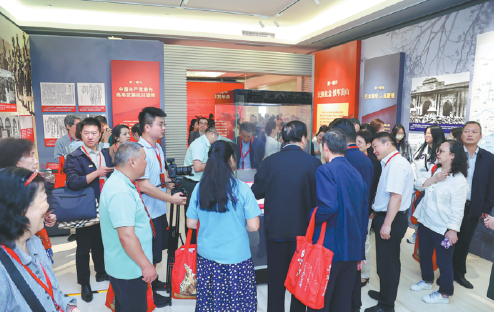


Today's Top News
- Ministry announces special port fee for US ships
- Lai's 'T-Dome' doomed to disaster
- Xi congratulates Kim on WPK's 80th founding anniversary
- Israel approves peace plan, intl community welcomes 'first phase' of truce
- Premier Li starts 3-day visit to DPRK
- A century of upholding Palace Museum spirit
















